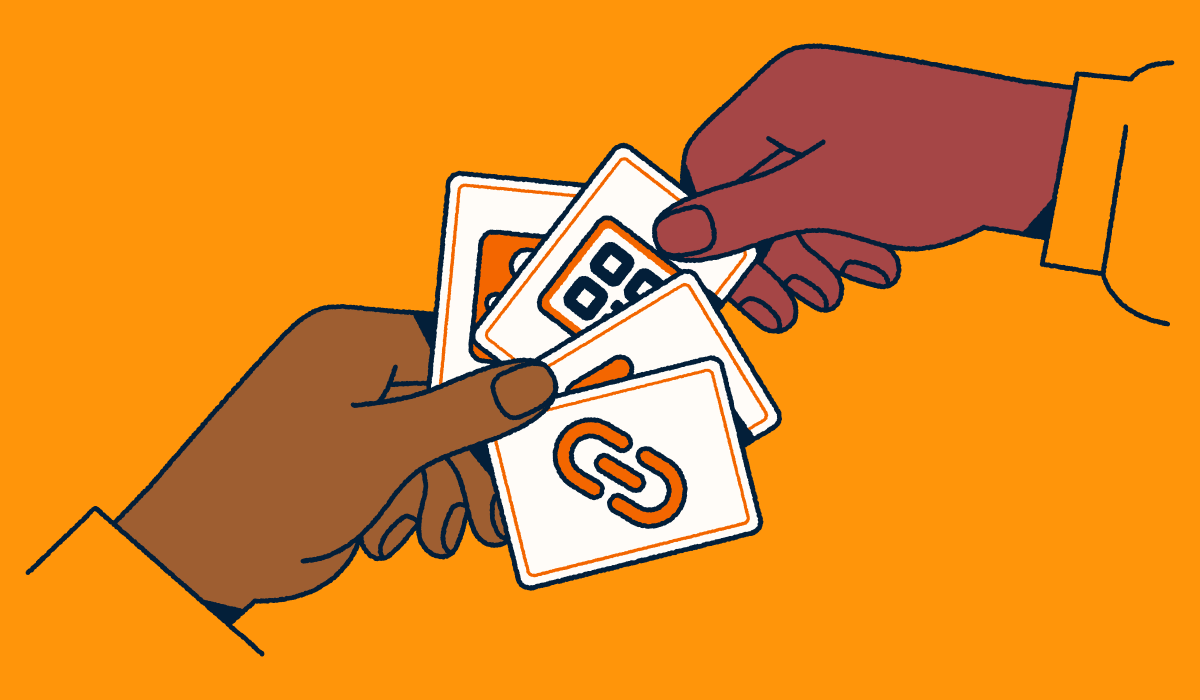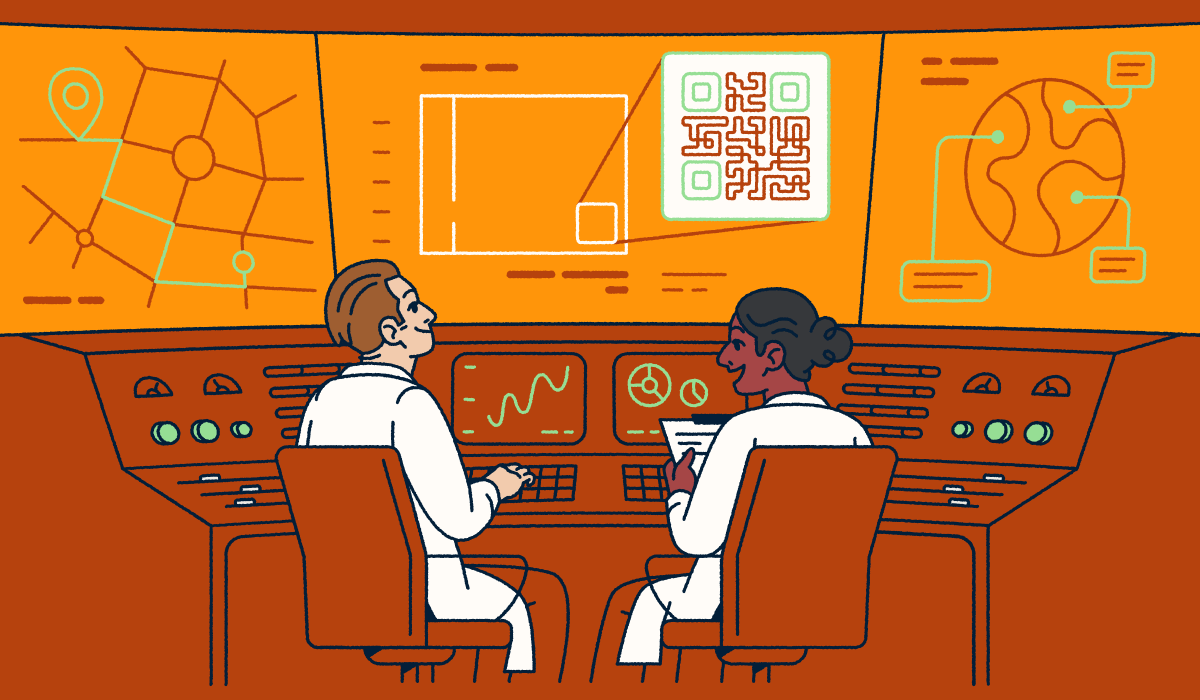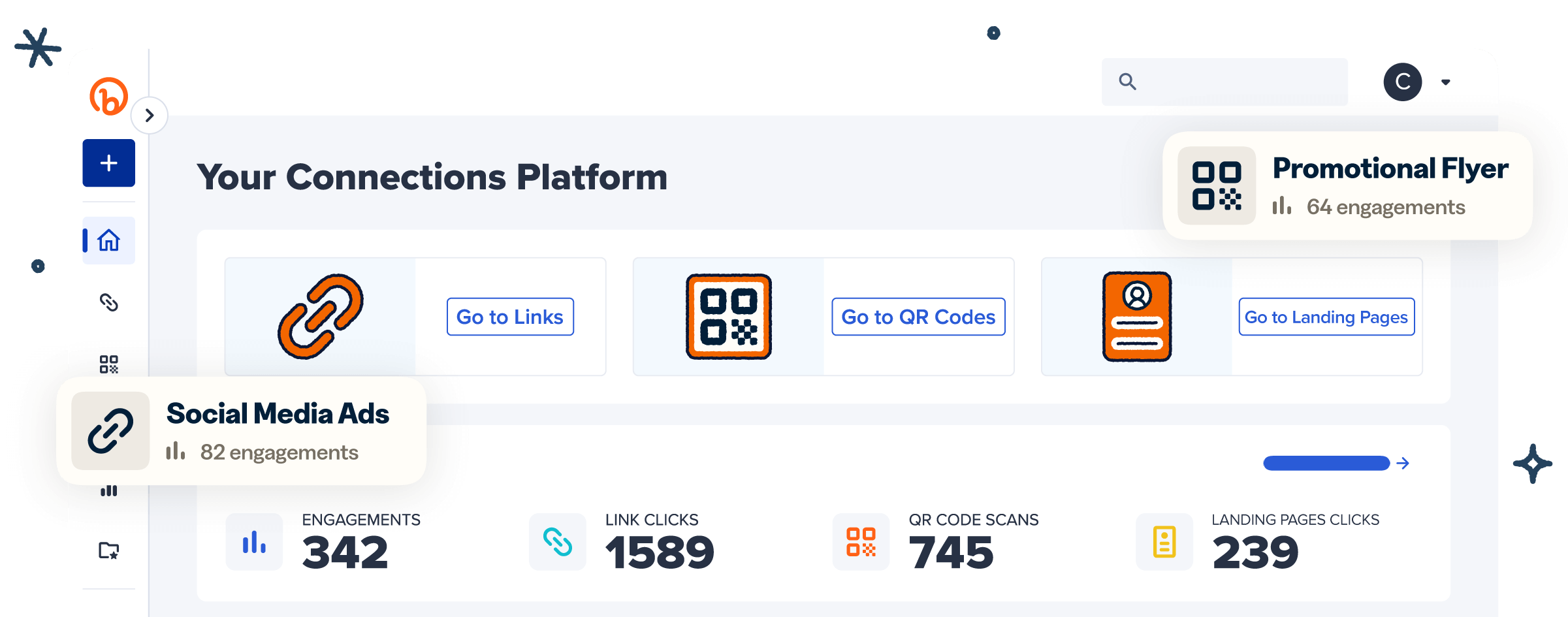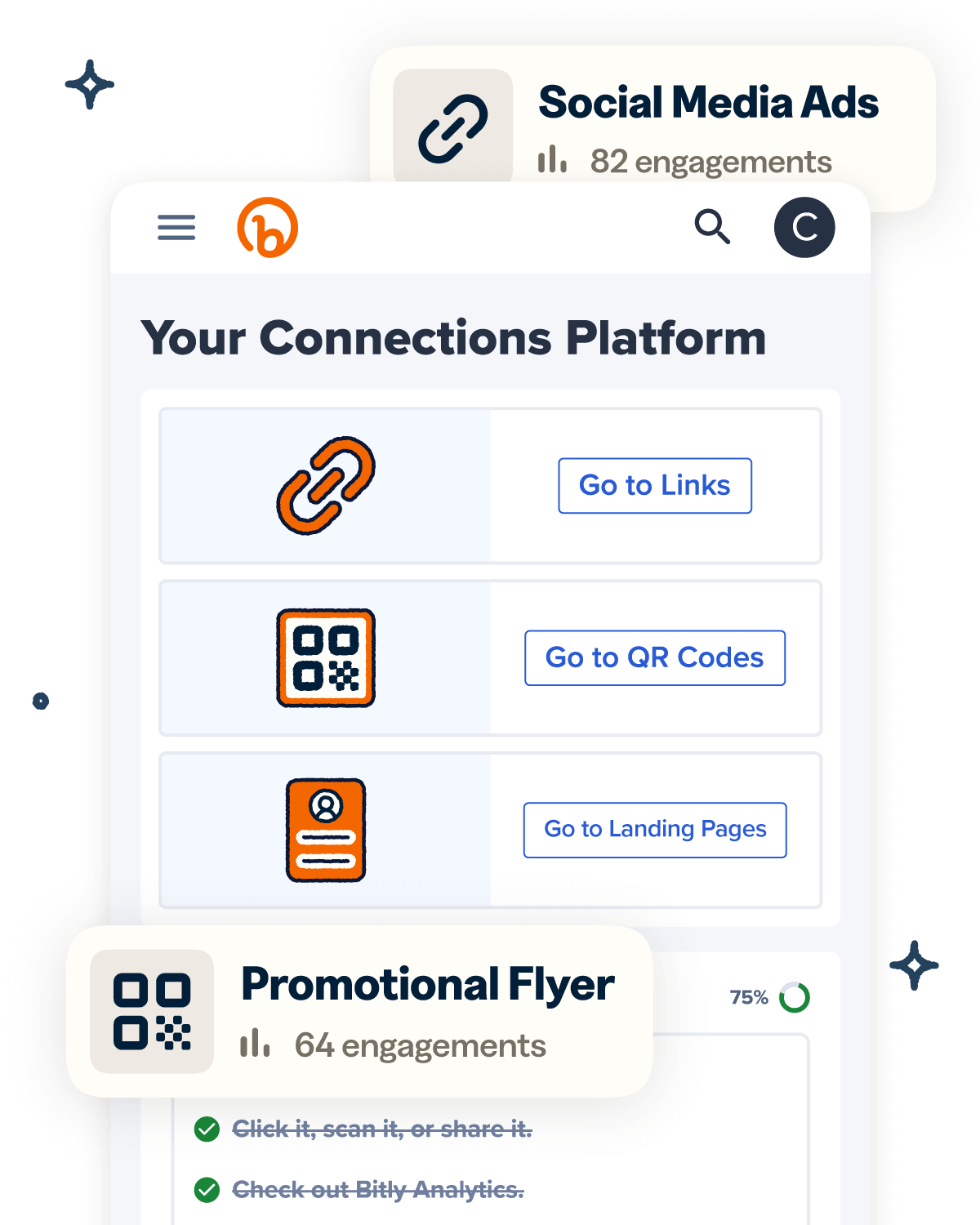If you’re an ecommerce business large or small, you are quite literally one in 27 million. Not only are you competing with every other online business for potential customers’ wallets, but you’re also fighting for their attention in a sea of endless other marketing messages. To keep up and stand out, you have to know exactly who your customers are, where they tend to find you, and how to get them to take action with simple, convenient digital connections.
This is the goal and challenge of ecommerce marketing, and you need the right approach, tools, and strategy to effectively reach customers throughout their journey. Let’s explore ecommerce marketing across the customer journey and how digital tools can drive deeper connections.
Ecommerce marketing and customer journeys
Ecommerce marketing represents all of the channels and strategies ecommerce businesses use to reach their audiences and convince them to buy. These include both digital channels and in-person and omnichannel marketing tactics—whatever best fits within your audience’s unique preferences and journey.
Effective ecommerce marketers know that no two customer journeys are alike, but they also try to learn everything they can about how their audience prefers to research, shop, and make decisions. They collect data and look for clues about what appeals to their audience in their product and messaging. When your primary (or only) retail presence is online, your audience is unlikely to simply stumble upon your shop as they might with a brick-and-mortar store. You need to show up on the channels where they spend time with compelling offerings that keep you top of mind even when they aren’t actively looking. That way, the moment they do decide to seek out your product, your brand is the first one they think of.
Map out the potential journey your best customers could take, consider the channels where you might reach them, then show up there and offer easy, customer-first ways that they can engage.
Digital tools and customer-first interactions
Through every audience engagement, ecommerce businesses need to drive attention (and traffic) back to their online storefront. While customers would need to get in their cars and drive to a physical location, they can shop ecommerce from their mobile device or computer within seconds. That’s why the right call-to-action and digital touchpoints can make or break the success of any ecommerce marketing campaign. You need to take a convenient, customer-first approach to both sharing relevant offers and inviting them to view engaging content, browse your offerings, or make a purchase.
Digital tools like short links, QR Codes, and customized landing pages turn any interaction into a personalized experience. From a quick scan to place an order or make a payment to curated product offerings, with just a few short clicks, your audience can take action on their terms to engage with you via these digital tools—that’s customer-first marketing in action. Plus, with every click or scan, you gain real-time data about their behavior to adapt your channels to the messaging and tactics that resonate with your audience.

3 stages of the ecommerce customer journey
The customer journey is far from a new concept, and there are plenty of schools of thought you could choose from when crafting your strategy. Today, we’ll keep it simple with three key stages of an ecommerce customer’s journey to becoming a repeat buyer: before they purchase, when they purchase, and after they purchase. Here’s how you can use digital tools to create a more engaging customer journey at every step.
1. Pre-purchase
Before a potential customer buys from you, your entire goal as an ecommerce business is to capture their attention, convince them that your product is worth their time and money, and compel them to take action. Every potential customer has different needs, but you can move them to the next step on their journey with touchpoints like these:
- Paid ads: Shoppers might encounter your digital ads when they search for a certain keyword or while they scroll social media, and you can target them based on their location or interests. For those who haven’t heard of your brand or are ready to take the next step, ads are a great way to build awareness and take them to targeted offerings with a single click. Link your ads to a landing page with curated product listings that make them want to learn more.
- Social media: Whether a customer encounters you on social media organically or via an ad, it’s an ideal marketing channel to feature your brand personality, preview products, or share a deal. Guide them to take action by clicking on a short link or heading to a customized landing page where they can quickly learn more.
- QR Codes: Even for ecommerce brands, physical campaigns like direct mail, billboards, and flyers help you get your brand in front of audiences who are looking for a product like yours. You need them to be able to take action, so share a QR Code that they can easily scan from their smartphone to learn more or access a discount or special offer. You can also enrich your digital campaigns with a QR Code for an interactive CTA. Best of all, you can track every scan to see which campaigns are capturing pre-purchase attention.
- Mobile-first websites: Mobile purchases make up over half of all ecommerce, so your website needs to keep up with the preferences of smartphone shoppers. Ensure your site and landing pages are responsive, which means they automatically detect the type of device someone is using.
With a helpful and engaging workflow across these channels, your brand can bring audiences one step closer to buying—and hopefully, reach them at the exact right moment to take the leap.
2. Purchase
So your newest customer is ready to check out; congrats! Ecommerce marketing doesn’t end when they decide to buy, though. Your digital or in-store touchpoints can make all the difference to ensure they don’t just check out once but become raving fans of your brand. Here’s how to ace the purchase stage of the customer journey:
- Checkout page optimization: Make your checkout experience the best it can be by optimizing it for all device types, providing product and ordering guidance as needed, and offering additional payment options using QR codes and short links. Keep the online process as quick, simple, and streamlined as possible—you might even offer text-to-pay for a secure checkout method—and expand your marketing to include shoppable social media posts and ads.
- In-store QR Codes: For retail brands with both an ecommerce business and brick-and-mortar presence, create a smooth purchase process that keeps shoppers engaged. Provide QR Codes in stores to order an out-of-stock item online (or ship an in-stock item to a loved one!), pay from their phone, or review product details on your site.
- SMS and email reminders: If you’ve collected shoppers’ phone numbers or email, you have a powerful channel to get in touch to share an order confirmation, provide status updates, or remind them to pick up an order. Send a text or email to remind customers of an abandoned cart and provide a short link to complete their purchase or enjoy a limited-time discount. Be sure to brand SMS short links with your domain, so customers know they can make a trusted click.
Now that you’ve made the sale, you (and the customer) are ready to keep building and deepening your relationship. As your ecommerce customer journey continues, follow the same principles of convenience and connection.
3. Post-purchase
The final stage of the customer journey isn’t a specific time frame—it lasts indefinitely beyond their first purchase. It’s up to your brand how you’ll make use of that time by sending personalized offers and putting the customer first. Consider a few of the most important post-purchase touchpoints:
- Thank-you SMS: You can strategically continue the conversation with your customers by following up to thank them for their purchase, but don’t leave it at expressing your gratitude. Share a short link to a discount for their next order, offer a sneak preview of an upcoming product, or send a strategically timed message when customers typically reorder to help them think about their next purchase.
- Personalized email campaigns: Don’t you love it when you get a message that truly feels like it was made for you? You can make your customers feel this way after they’ve purchased by sending a personalized email that recommends other products they might enjoy based on their past behavior. Share a short link to these products so they can quickly review next steps made just for them, which just might lead to their next purchase.
- Mobile landing pages: Across channels, a mobile landing page lets you share a curated experience all on one optimized page. Invite them via text or email to join your loyalty program, share feedback on recent orders, or make a referral in exchange for a discount—all of which are offers just right for a returning customer.
- Package touchpoints: The moment when customers have your product in their hands at home is a perfect time to connect with them and re-engage them to your ecommerce site. Share a QR Code from any and every package to provide instructions, help them reorder or request support, or browse other products. With a simple scan, they’re back on your digital channels and primed for a deeper brand connection.
Make the most of every interaction after a customer buys from you. You never know when that touchpoint might inspire them to recommend your brand, post about you on social media, or head back to your online store to make their next purchase.

3 ecommerce predictions looking ahead
What’s next for the ecommerce customer journey, and how will digital tools shape online brands’ interactions with their best buyers? Tap into these three trends going forward.
1. Mobile-first shopping
Mobile ecommerce now makes up 60% of all ecommerce—and that figure is still growing. Winning ecommerce brands won’t just offer mobile-friendly shopping experiences but they’ll focus on mobile-first. They’ll double down on mobile apps, offer flexible payment options via text or with a QR Code scan, and direct in-person interactions to online options straight from a smartphone.
2. Continued speed and immediacy
Customers want everything quicker than ever before—sooner shipping times, faster support response times, and easier (even instant) checkout. Ecommerce brands need to continue investing their budget and efforts in providing clear, simple next steps for shoppers to purchase as fast as possible or retrieve information about the products they want to buy.
3. Commerce, made conversational
As much as customers hunger for convenience and speed, they’re also eager for a human touch—to feel like their favorite brands are paying attention and truly engaging them. That’s why many brands are turning to conversational commerce, featuring tools like proactive chat, text-to-messaging ads, and in-app messaging. Brands will continue to integrate these offerings into the customer journey alongside digital tools like short links.

Make every customer touchpoint count
Humans rarely (if ever) become lifelong friends with someone after just one conversation. The same goes for your brand’s relationships with customers—you won’t turn someone who’s never heard of your brand into a lifetime fan after one ad, email, or text. But when you understand the customer journey, you can forge a connection one interaction at a time, starting with the information you offer and the easy ways you ask them to take action.
Ready to level up your ecommerce marketing? The missing ingredient just might be your digital tools, from branded short links and customized QR Codes to engaging mobile-friendly landing pages—and Bitly has you covered on all those fronts. We’re here to help at every stage of the journey; sign up to get started today.




